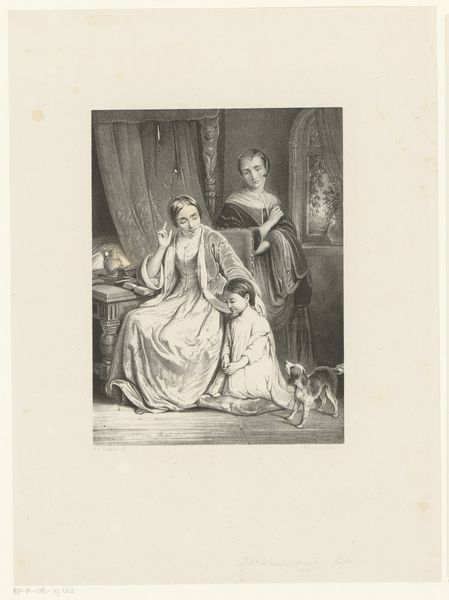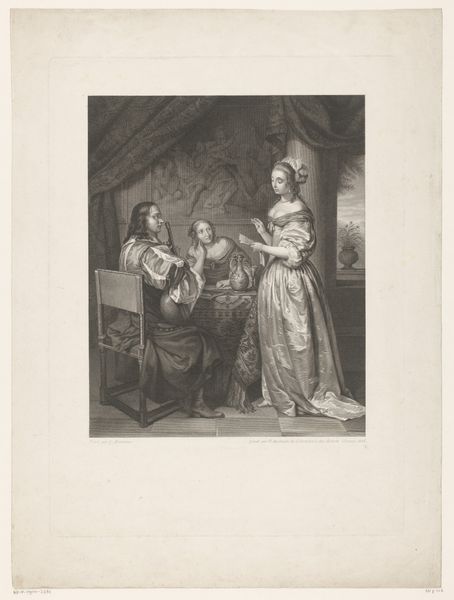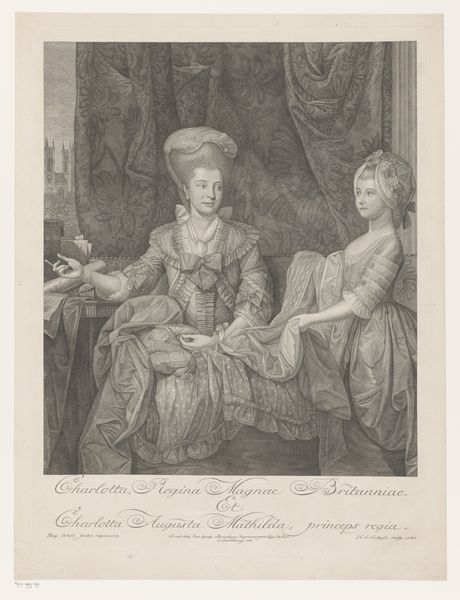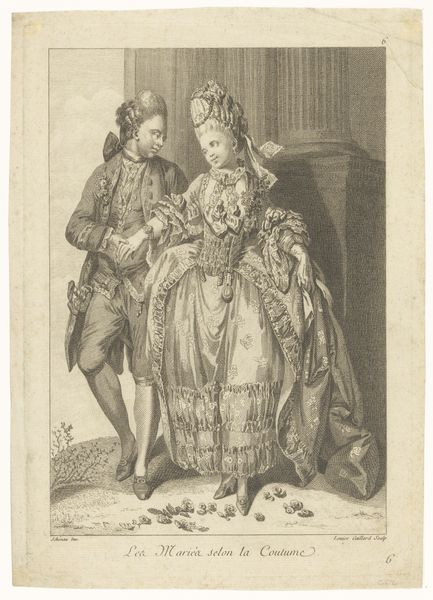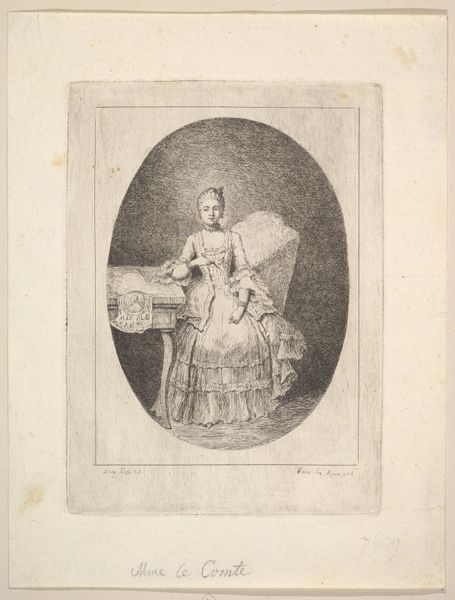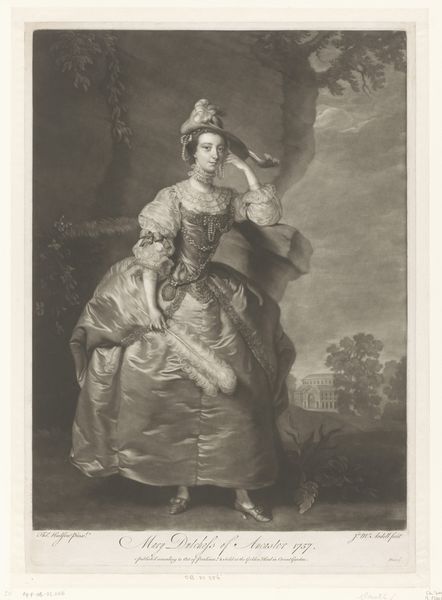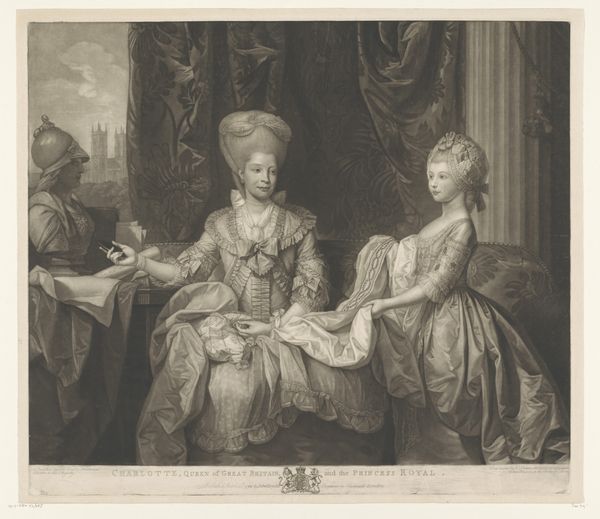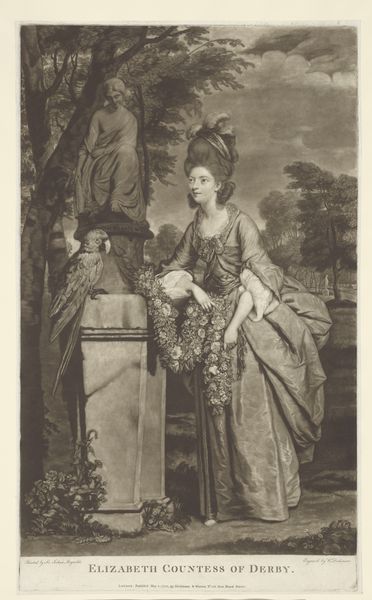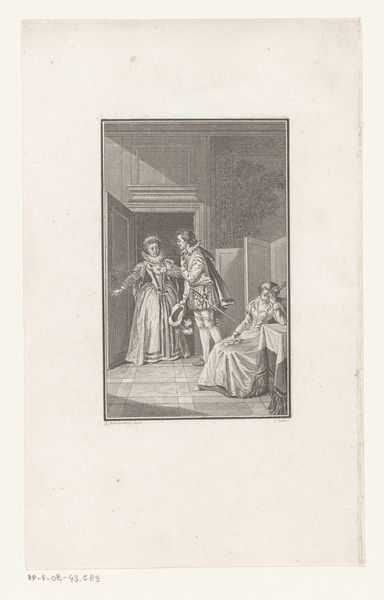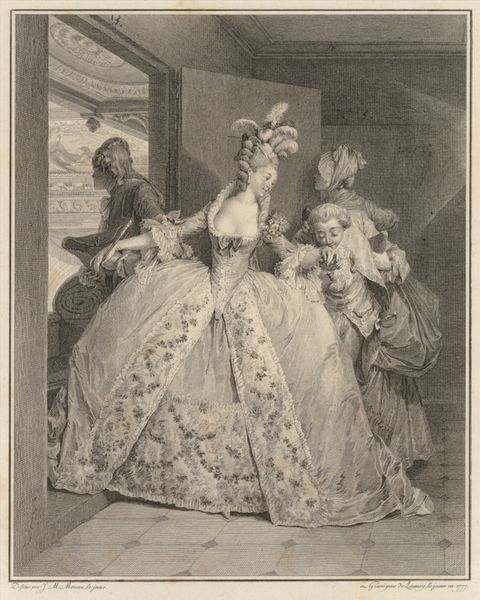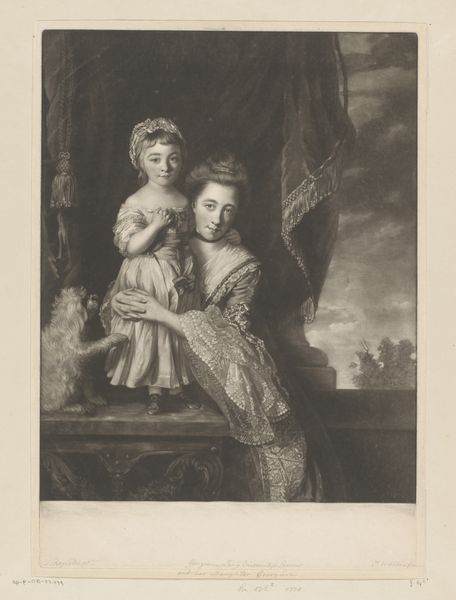
drawing, pencil
#
portrait
#
drawing
#
figuration
#
child
#
pencil
#
genre-painting
#
academic-art
Dimensions: height 402 mm, width 338 mm
Copyright: Rijks Museum: Open Domain
Curator: Here we have "Double Portrait of Two Unknown Children," thought to be from around 1888 or 1889. It's attributed to Louis Joseph Greuse and held here at the Rijksmuseum. The work is pencil on paper, presenting two young girls in elaborate dress. Editor: My immediate reaction is unease. The level of detail in the clothing contrasts so starkly with the unfinished nature of the figures, especially the child on the left who is without a face! It draws my attention to the labour involved in producing the dresses – all that lace. Curator: The faceless child… It evokes a ghost-like presence, almost a symbolic absence, doesn't it? Consider the expectations placed upon young women of the time, their identities sometimes subsumed by societal roles or the lack of them, such as here if that face never happened. That could well play into how Greuze thought and acted as a product of his society and time. Editor: Right, because someone had to meticulously render every ruffle, every fold. Who made those clothes, and under what conditions? Were they made to demonstrate status, regardless of cost to the maker? I am particularly intrigued by the rendering. You see the precision in the pleats and lace—the clear marks of a very capable artist. Curator: Indeed, the fashion very conspicuously speaks to that high class of Dutch society. Yet Greuze's work also captures the aesthetic values of the time; genre-painting that idealizes everyday life to showcase wealth or cultural appreciation for childhood. Think about these girls possibly having a governess to monitor the manufacturing. How removed would the artist or these subjects be from the labor necessary to procure this finished image? Editor: And those children...posed, encased, objectified by the trappings of status. It really challenges our sense of what portraiture, and childhood, were all about. Curator: Yes, their presentation as almost dolls within a scene reminds us that even images of children were often loaded with meaning beyond simple likeness. This double portrait isn’t merely representational; it’s actively constructing identities, inviting assumptions. Editor: Considering the likely process, with layers of commissioning, design, production, and, ultimately, consumption of goods. The very 'production' of children from an artisanal system like garment-making to an art system where this all results in display, makes me wonder about labor and cost. I had to re-see the drawing, you see? Curator: Absolutely, I agree. These symbols allow this moment in history to still linger with us in the present. Editor: A sharp reminder of what we tend to skip over: material lives of images. Thank you.
Comments
No comments
Be the first to comment and join the conversation on the ultimate creative platform.
